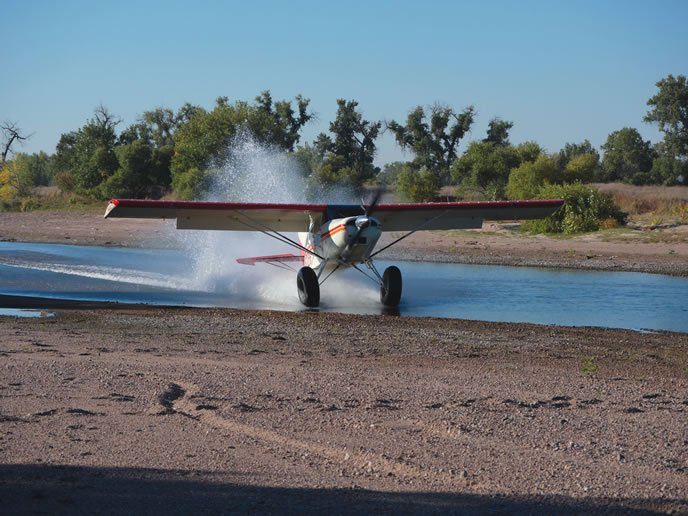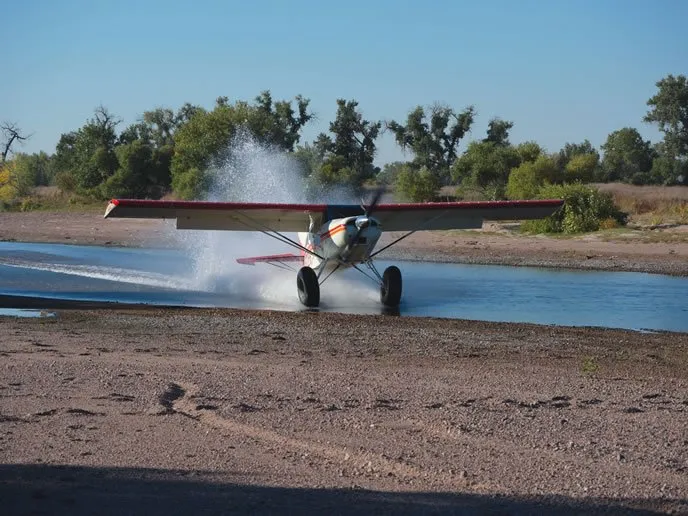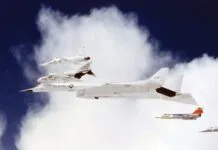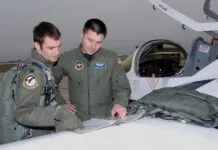I admit I am a bit of an adventure-seeker. It may be just one big rationalization, but I want to defend the concept of aviation adventure-seeking, at least to a degree. For example, after watching a particularly challenging backcountry landing video found online, I mused over the many comments it drew, typically along the lines of “Not for me,” “No way,” and “Crazy.” My reaction—and I was not alone—was, “I want to do that.” But I also want to balance that activity with a healthy does of risk management and accident prevention, i.e., the mission of this magazine.

Many, if not most of the pilots whose skills we wish to emulate, are practicing advanced flying skills. Those advanced skills inherently come with greater risk. For example, Bob Hoover’s demonstrations in his Aero Commander are the epitome of energy management. However, shutting down both engines of a twin to start a demonstration doesn’t sound like good aeronautical decision-making, but high-risk behavior, which makes safety considerations even more important.
Many things separate typical pilots from Bob Hoover, but he is not super-human. With enough time, training, discipline and practice, it’s possible to approach if not equal some of his advanced skills. Our efforts to emulate the aviators we admire, however, probably shouldn’t start with shutting down both engines to see how it goes. One of the keys is to break it down and answer some questions. What is it that separates Bob Hoover from a yahoo trying to replicate the routine in a 150 and bending metal? The answer is somewhere between extreme competence and extreme stupidity, the middle ground being where a lot of us do our flying.
Attitudes and decisions
Pilots who intentionally put themselves into unconventional or more challenging flying are engaging in less safe behavior, but when they do it well, they are better pilots for it. Less safe isn’t necessarily unsafe, though if the flying you do requires a parachute, that should tell you something about your position relative to the safety margin. We all know flying is not particularly forgiving, and the edges of the performance envelope can be very sharp.
There’s an old adage that good judgment comes from experience, and experience comes from bad judgment. Pilots who operate near the edge of an envelope—theirs, the airplane’s or both—have less margin, which requires them to have more good judgment. Key is learning from practice and making occasional mistakes, but not the kind taking you beyond the margin of safety.
If you’re a thrill seeker, hazardous attitudes probably pose the greatest risk. The FAA’s risk-management training materials go into great detail identifying hazardous attitudes negatively affecting aeronautical decision-making and provide quizzes that help pilots and instructors identify these attitudes in themselves.
Perhaps the most effective inoculation against bad decisions is identifying them so you can keep hazardous attitudes in check. You can start with a resource like Chapter 17 of the FAA’s Pilot’s Handbook of Aeronautical Knowledge, (PHAK) which is dedicated to aeronautical decision-making and amplifies content in other training materials. It’s a good read and will help pilots identify their weaknesses and tendencies toward poor aviation decision making.
Both of these resources, however, are focused on the everyday hazards of aviation—fatigue, stress, weather, health, time and mission pressures, etc.—which can be assessed and evaluated for any given flight. There’s a helpful questionnaire and matrix in the PHAK providing a risk management score that will give a pilot a head’s up on whether a given flight is routine or carries higher risk. However, the PHAK is not a particularly helpful guide for those who willfully embark on a flight with inherently higher risk. The desire to intentionally practice advanced aviation skills demands greater focus on safety.
Knowing where you are on the scale of hazardous attitudes is the first check-and-balance you should use to verify you are still showing good judgment. Learn those attitudes, challenge yourself with them, and embrace them before you undertake advanced training. My recasting of them is: Stay legal; Have a plan; Know the risks; Don’t be stupid; Don’t give up.
Additional Training
If you are one of those pilots seeking to add adventure to your list of aviation accomplishments, the obvious place to begin is additional training. Just as one of the antidotes to hazardous attitude is to not have one in the first place, it’s a bit obvious to state advanced flying should include advanced instruction.
For example, are you uncomfortable with stalls? Then go out with an instructor and work on them. That’s the correct action, though at some point, you have to break loose and do them on your own. (There is no such thing as practicing on your own with an instructor—on your own means doing it solo.)
I hated practicing stalls, especially the power-on variety. Choosing to practice them made me anxious until I mastered them. Now I do them every year and in every plane I fly, just to make sure I retain that mastery. I could go do them with an instructor, but that’s not going to help too much if I need to use the skill in an inadvertent stall. Whenever I feel intimidated by the maneuver, I demonstrate to myself it until I regain my comfort level. Is practicing stalls more risky than straight and level flight? Absolutely. Should it be avoided? Absolutely not.
Wiring-in Mastery
The FAA says “I can do that” is a phrase that defines a macho attitude, but it’s also a response necessary to reach mastery. Eventually you will have to perform solo the maneuvers you practice with your instructor. After all, the point of instruction is to help you earn your certificates and ratings by demonstrating a minimal level of skills defined in the practical test standards. But it shouldn’t end there. Your skills should continue to build steadily, which requires practice on your own.
When you transition from doing maneuvers with an instructor to doing them on your own, you are in the spectrum of more advanced flying, which usually means higher risk. As you push yourself, you are going to get anxious and possibly task-saturated, which may lead to poor aviation decision-making. The key is being prepared. You have to know when your discomfort is warranted, and when it is just a healthy reaction you will have to overcome to wire-in new and correct muscle memory. That’s a tough transition. Listen to your discomfort.
At a recent aviation conference in Montana, I sat down with two skilled instructors who work with pilots seeking advanced training, the kind of flying that could easily fall into the category of thrill-seeking. Rich Stowell, a.k.a. “The Spin Doctor,” specializes in emergency maneuver and upset recovery training. He has performed more spins than landings—more than 33,000 of them—and was the FAA’s 2014 National FAASTeam Representative of the Year. Patrick Romano teaches advanced tailwheel operations, with a focus on extremely short backcountry airstrips—not basic backcountry flying, but extreme backcountry flying. Both shared their views on the risk considerations that go with advanced flying and the balance between thrill-seeking and risk management.
Spin Training and Safety
“I have never seen a pilot make the right moves to recover from a spin by accident,” said Stowell. “It takes training to learn to ignore the drama of a spin and focus on the key skills needed to identify the predicament and execute the proper recovery.”
Adrenaline is a hard chemical to ignore when it’s coursing through your body. When it happens to you, the response can veer anywhere between the hazardous attitude of impulsivity gone wild or the equally hazardous attitude of resignation. The “fight or flight” response triggered by adrenaline can make us stupid.
Stowell quoted the aviation adage that the first step of any emergency procedure should be to wind your watch, the point being that your initial knee-jerk reaction likely is wrong and could make things worse. The time it takes to wind a watch or take a deep breath is enough to collect yourself and allow your training to take over.
The problem? Training won’t kick in if you don’t have it in your background in the first place. Stowell thinks the most ill-prepared pilots for spin recovery are those who have not had emergency maneuver training, saying, “When you enter a spin for the first time, it is like having Hollywood special effects coming at you in real life.” The world is turning, your head is spinning, and so is your stomach. To say it’s a distracting environment is an understatement. With all the drama and little or no training, it’s hard for an untrained pilot to choose the right course of action.
Some pilots pursue spin and upset recovery training for the thrill of it, but Stowell said most take the training to get over the fear of experiencing unusual attitudes. It takes time and repetition to get pilots used to the new norm of unusual attitudes. But eventually, with repetition, the training takes over, and pilots learn the proper steps to recover. Eventually those steps become ingrained, which is the point.
You may still panic when faced with an unusual attitude, but if you have training, there’s a chance it will take over—after you wind your watch, of course.
The Dilemma of Mastery
One thing unifying the pilot community is that we’re goal-oriented. Even mastering the most basic skills that help earn us our certificates and ratings is laudable. But most of us don’t aspire to be better hundred-dollar hamburger pilots after the checkride. Instead, we typically aim for the next big goal. It could be a high-performance endorsement, a tailwheel endorsement, upset recovery training, or an instrument rating. Typically, pilots advance from goal to goal.
Advanced flying skill requires practice, experience and then meeting stiff requirements to remain both proficient and legal. For aerobatic training, you need proper initial training, then access to a capable aircraft, appropriate airspace and a parachute. Staying proficient with instrument flight requires hood and simulator time as well as regular dips into actual IMC conditions when it’s reasonable and safe to do so.
My forays into actual IMC always prove to me that I need to fly on the gauges—either simulated or for-real—more frequently if I am to remain truly proficient, and preferably before my skills start to ebb. When my skills do begin to wane, it puts me at a higher risk when I have to venture into the clouds. I have found that remaining proficient is always a challenge, partly because it is a degrading skill. To remove the rust, I am inherently flying when rusty. And that puts me at risk.
The key is acknowledging when the rust may be too heavy to remove on my own, and then it is time for recurrent training and dual instruction.
Mike Hart is an Idaho-based commercial/IFR pilot with more than 1100 hours, and proud owner of a 1946 Piper J3 Cub and a Cessna 180. He also is the Idaho liaison to the Recreational Aviation Foundation.




